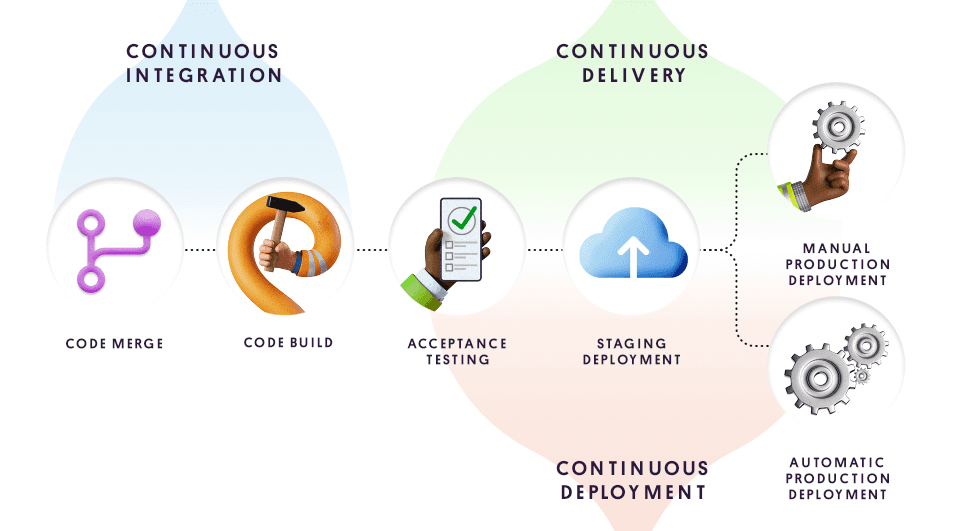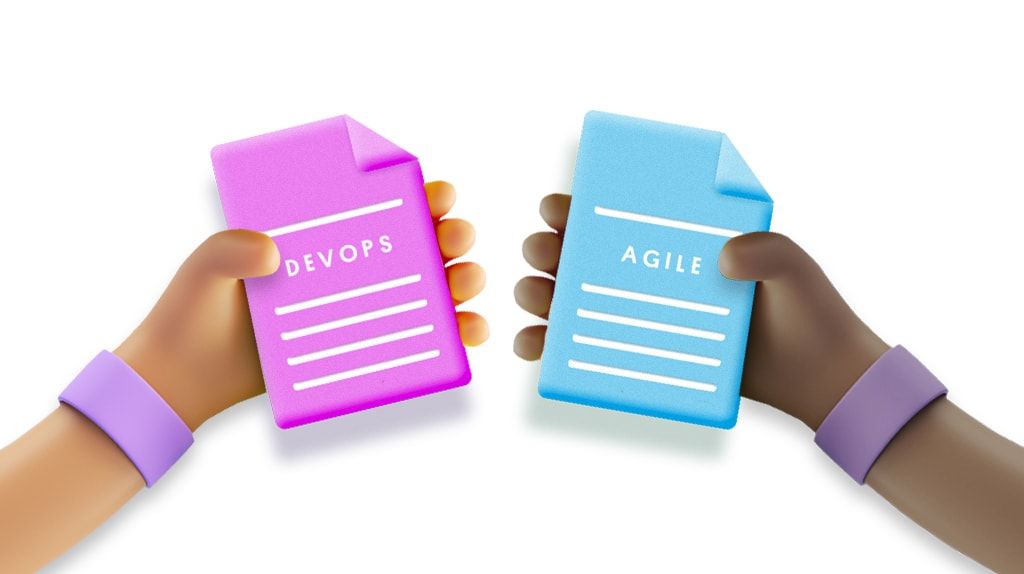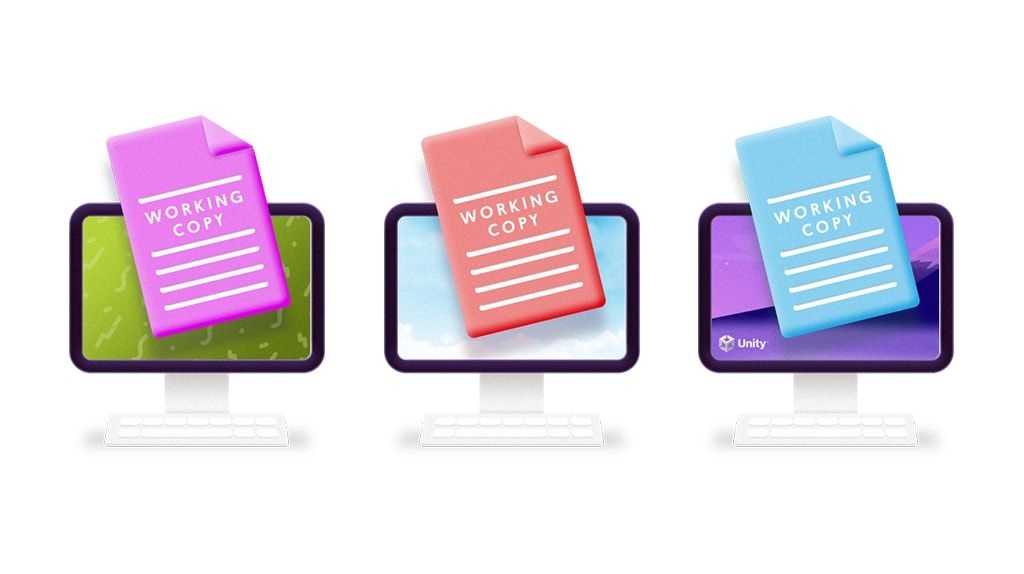
什么是 CI/CD?

CI/CD解释
CI/CD 是一个涵盖多个 DevOps 阶段的总称。CI(持续集成)是每天多次将代码更改集成到代码仓库中的做法。CD 有两个含义:Continuous Delivery(持续交付)自动化代码集成,而 Continuous Deployment(持续部署)自动向终端用户发布最终构建。 CI/CD 的频繁测试减少了代码错误和缺陷,使其对每个 DevOps 工作流程都至关重要。
什么是持续集成?(CI)
CI 是一种 DevOps 最佳实践,也是 DevOps 生命周期的一个阶段,期间,开发人员将代码签入其共享代码的代码仓库,通常每天数次。理想情况下,自动构建工具每次都会验证签入或分支,以确保没有错误并且已准备好投入生产。主要优势是通常会早期发现问题,避免累积成更大的问题。
采用 CI 意味着频繁集成较小的更改,而不是低频次地一次集成大量更新。将测试、合并和签入共享代码仓库更改的工作流程自动化,意味着团队能够以更快的速度交付更简洁的代码。更简洁的代码意味着更快的验证、更简洁的发布,以及更容易扩展的更高效的开发流程。
持续集成是如何工作的?
CI 是一种 DevOps 最佳实践,也是 DevOps 生命周期的一个阶段,期间,开发人员将代码签入其共享代码的代码仓库,通常每天数次。理想情况下,自动构建工具每次都会验证签入或分支,以确保没有错误并且已准备好投入生产。主要优势是通常会早期发现问题,避免累积成更大的问题。
采用 CI 意味着频繁集成较小的更改,而不是低频次地一次集成大量更新。将测试、合并和签入共享代码仓库更改的工作流程自动化,意味着团队能够以更快的速度交付更简洁的代码。更简洁的代码意味着更快的验证、更简洁的发布,以及更容易扩展的更高效的开发流程。
CI的规则和原则
CI 是一种 DevOps 最佳实践,也是 DevOps 生命周期的一个阶段,期间,开发人员将代码签入其共享代码的代码仓库,通常每天数次。理想情况下,自动构建工具每次都会验证签入或分支,以确保没有错误并且已准备好投入生产。主要优势是通常会早期发现问题,避免累积成更大的问题。
采用 CI 意味着频繁集成较小的更改,而不是低频次地一次集成大量更新。将测试、合并和签入共享代码仓库更改的工作流程自动化,意味着团队能够以更快的速度交付更简洁的代码。更简洁的代码意味着更快的验证、更简洁的发布,以及更容易扩展的更高效的开发流程。

持续交付与持续部署
持续交付紧随 CI,您可以将其视为开发流程中的一个检查点阶段,位于在最终产品发布或部署给客户之前。验证代码更改后,它们会自动交付到代码仓库。
持续交付的目标是保持变更集足够小,使得主构建的任何更新都不会影响最终产品的”生产就绪”状态,如果它没有发布就绪。最终产品可能包含次要错误,但不会影响用户体验。
采用持续交付意味着开发人员可以花费更少的时间进行内部测试,因为这会确保只有稳定的代码才能进入交付阶段。它使错误检测成为一个更简单的过程,加快解决进度。
CI/CD 和 DevOps 有何关联?
DevOps 是一种旨在提高软件开发效率的文化和流程。
CI/CD 流程是一组特定的阶段,这些阶段涉及支持 DevOps 生命周期的工具和自动化。尽管 CI/CD 是 DevOps 文化不可或缺的一部分,但 DevOps 的范围更广,涵盖了整个软件开发生命周期的更多内容 – 从协作到团队结构、再到可观测性、版本控制等等。
DevOps 的实施因组织而异,但从本质上讲,没有 CI/CD 就无法完成 DevOps。CI/CD 流程本质上与 DevOps 文化及其小规模频繁的发布过程联系在一起。
CI/CD的好处
快速迭代
作为 DevOps 生命周期的一部分,CI/CD 将验证和部署代码库更改的手动工作自动化完成,从而加速了开发。
更干净的代码
通过日常检查大量的小规模更改,可大幅降低将构建破坏错误引入源代码的风险。
更快的错误修复
CI/CD 流程可更频繁地将较小的变更集合并,从而更轻松地识别代码错误,并及时修复,避免其累积成为更严重的问题。
更短的反馈回路
CI/CD 有助于缩短反馈循环,这是 DevOps 的核心原则, 因为较小的迭代更改更容易集成、测试和部署。
改善协作:
通过定义代码提交和构建启动的流程和时间表,CI/CD 使工作更加清晰。有了更明确的目标,团队可以更敏捷地行动。
更快乐的客户
因为构建始终可以通过 CI/CD 随时发布,减少了客户经历的服务中断,并且可以更快地集成他们的反馈。

通过 Unity 的 CI/CD 解决方案,使您的项目快速迭代,并利用强大的源代码管理和自动化。选择 Unity Cloud Build 进行分布式工作,或使用 Unity Build Server 扩展您的本地构建容量。


